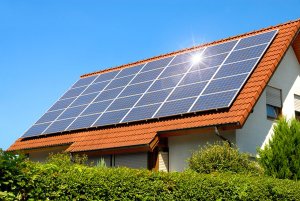Over 29 Years Serving Central Florida
How Does Solar Electric Work?
January 4, 2017A home solar system in the Villages, FL will make your home more efficient and save you money on your energy bills. This type of investment can also reduce your carbon footprint and overall environmental impact. You will need a PV system to work with, which will convert sunlight into electricity. There are certain conditions that make for better results and a more effective solar system, so you should know what they are and set yourself up for success. Continue reading to learn more about how solar electric works.

Choosing a PV System
If you don’t know much about home solar systems or solar panels, you might not know what a PV system is. PV stands for photovoltaic, and this kind of system is what will allow you to get electricity out of the sunlight that shines on your building. PV systems are not to be confused with solar thermal systems, which take heat from the sunlight and use it to heat water. Instead, this part of your solar system allows you to convert the sunlight directly into electricity for use in your home or place of business.
Converting Sunlight to Electricity
Since PV systems don’t rely on heat from sunlight and don’t use other resources, how can they power your house? The way photovoltaic solar systems work is by the semiconductor materials in the PV modules interacting with sunlight. When this happens, electrons from the sunlight become captured in a current. You can then use the resulting electric current to power appliances and fixtures in your home or office.
Learning How Solar Electric Works Best
Where you have your solar panels placed and how you use them will determine how efficient your new solar system will be. The more the PV modules are exposed to sunlight, the more electricity you will get. However, there is another factor to keep in mind: Greater intensity of the sunlight means more electricity for you. As long as the sun is shining on your PV modules, you should be receiving electricity; you can also store the energy in batteries or connect to the utility grid.
